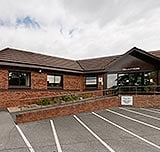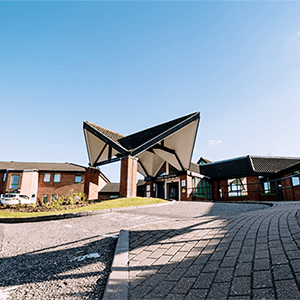
Search by region


The Rafaelo Procedure® is a revolutionary day case treatment for haemorrhoids (piles) that is a safe and effective alternative to surgery, with minimal post-operative pain, allowing patients to return to their normal daily activities immediately after treatment.
Haemorrhoids (also known as ‘piles’) are swollen vascular cushions (blood vessels) around or just inside the anal canal (back passage). There are two kinds of haemorrhoid: internal and external. Internal haemorrhoids are covered by the mucosal lining of the rectum, and often remain on the inside (Grade 1). Although usually not painful, internal haemorrhoids may descend and prolapse out of the anus, usually during defecation (passage of stool). Internal haemorrhoids that prolapse and reduce back inside by themselves are classified as Grade 2, while those that only reduce with gentle pushing are Grade 3. External haemorrhoids (Grade 4) are permanently on the outside of the anus, and are covered by skin. If a blood clot forms within a haemorrhoid, this is very painful, and is called a ‘thrombosed pile’.
The haemorrhoidal cushions are normal anatomical structures, but obesity, pregnancy and childbirth, constipation and straining or heavy lifting can all contribute to the enlargement of these cushions and the development of symptoms, such as bleeding, itching and soreness, discomfort, mucous discharge and prolapse.
Most of the time no further intervention is required. Dietary and lifestyle measures such as increased fibre intake, drinking plenty of water each day and avoiding straining at stool is usually enough to reduce symptoms. Sometimes gentle laxatives can help reduce straining if dietary measures do not work. If simple measure do not work sometimes intervention is then required.
Rubber bands are placed at the apex of the haemorrhoid. This can be done in the outpatient clinic. This causes the “piles” to shrink and as the wound fibroses it becomes fixed to the lining of the rectum, reducing prolapse and preventing engorgement of the anal cushions. Most of the time this is painless, although sometimes there is discomfort at the anus. Bleeding can occur at about day 5 following “banding” and this is seen in about 2-5% of patients. Unfortunately banding isn’t always successful and recurrence rates of up to 40% have been reported.
This is an operation that requires general anaesthetic. A suture (or stitch) is placed inside the rectum, above the haemorrhoid cushion. This usually results in the haemorrhoid shrinking as its blood supply is reduced. If there is prolapse this is usually “pleated” up inside the anus.
This procedure has different names, depending on the system used; HALO RAR – Haemorrhoidal Artery Ligation Operation with Recto-anal Repair), THD – Trans-anal Haemorrhoidal De-arterialisation.
Under general anaesthetic the haemorrhoids are removed. This is a simple day case procedure. Haemorrhoidectomy is a very effective treatment for “piles”, and although in the short term is associated with significant pain, in the long term results and quality of life have been proved to be high.
A novel treatment that utilises safe and reliable radio frequency technology to reduce, and in most cases, eliminate, the common symptoms of internal (Grade 1-3) haemorrhoids. Similar technology has been used successfully for many years to treat varicose veins in the legs, and this has now been adapted and modified for the treatment of haemorrhoids by the insertion of a special needle probe into the haemorrhoidal cushion, through which radio frequency energy is applied which aims to shrink the haemorrhoids by heating the tissue.
The Rafaelo Procedure is a minimally-invasive, day case procedure, which typically takes no longer than 15-20 minutes to perform. It can be carried out using only local anaesthetic (although some patients may choose to have a mild sedative, or even a general anaesthetic). Most patients report very little pain or discomfort, and as a result the post-operative recovery time is very short.
All treatments and procedures have risks. The most common risks post-procedure and during the following 2 weeks include discomfort, mild bleeding or spotting or anal discharge. Other rarer post-procedure complications might include recurrence of symptoms, infection, ulceration, fissure, or significant bleeding/haemorrhage.
Your consultant will discuss the benefits and risks of The Rafaelo Procedure during your initial consultation.
The Rafaelo Procedure is a novel treatment, which means that there is not yet much good evidence about how well it works, it’s long-term effects, or how safe it is for treating haemorrhoids. The National Institute for Health and Care Excellence (NICE) has approved the procedure when it is carried out with special arrangements for clinical governance, consent and audit or research (NICE Interventional procedures guidance IPG589)
After the procedure you will be given some painkillers to take home with you. The recovery time from the procedure is normally between one and seven days, depending on the severity of the haemorrhoids. You may be able to return to work immediately or within a couple of days after the procedure. You will be seen again in clinic typically between 6 and 8 weeks after the procedure.
Content provided and written by Rafaelo: https://www.modernaestheticsolutions.com


We are delighted to announce the appointment of Miss Sabeen Akhtar as the new Group Medical Director at Ramsay Health Care UK.
Springfield, part of Ramsay Health Care UK, is delighted to announce that men suffering from a benign enlarged prostate (Benign Prostatic Hyperplasia) will be able to receive robotic Aquablation Therapy.
Ramsay Health Care UK joined Leeds Pride to celebrate love, unity, and inclusion. Our growing culture of allyship ensures colleagues and patients feel seen, valued, and celebrated.
The information, including but not limited to, text, graphics, images and other material, contained on this website is for educational purposes only and not intended to be a substitute for medical advice, diagnosis or treatment. Always seek the advice of your physician or other qualified health care provider with any questions you may have regarding a medical condition or treatment.
No warranty or guarantee is made that the information contained on this website is complete or accurate in every respect. The testimonials, statements, and opinions presented on our website are applicable to the individuals depicted. Results will vary and may not be representative of the experience of others. Prior patient results are only provided as examples of what may be achievable. Individual results will vary and no guarantee is stated or implied by any photo use or any statement on this website.
Ramsay is a trusted provider of plastic or reconstructive surgery treatments as a part of our wrap-around holistic patient care. Our personal, friendly and professional team are here to support you throughout to ensure the best possible care. All procedures we perform are clinically justified.
*Acceptance is subject to status. Terms and conditions apply. Ramsay Health Care UK Operations Limited is authorised and regulated by the Financial Conduct authority under FRN 702886. Ramsay Healthcare UK Operations is acting as a credit broker to Chrysalis Finance Limited.
Ramsay Health Care UK is not currently recruiting for any roles based outside of England. If you are interested in applying for a role with Ramsay Health Care UK, please note that all available positions are advertised exclusively on our official website: https://www.ramsayhealth.co.uk/careers. Be cautious of individuals or organisations that approach you directly for remotely-based roles. Always verify the authenticity of the job offer and be careful with whom you share your personal information. For more information and advice on employment fraud, please visit: https://www.ramsayhealth.co.uk/careers/recruitment-fraud